This has been a terrible year for basically everyone. In my personal experience, it could have been a lot worse – I’ve barely left the house for about nine months, but I’ve been able to work from home on freelance jobs while helping my parents through lockdown, and we’re tucked away in a remote part of the world where things have been relatively quiet. Many of my friends have been sick, and/or lost people they love.
I don’t want to get bogged down in discussing the physical and emotional impact of the pandemic here – I think everyone understands the situation well enough by now – but it’s worth noting that you can still see its shadow being cast over the list of games I’ve played this year. Gone are the local multiplayer games like Overcooked, or the coaching sessions I used to give my niece and nephew on games like Monster Hunter and Splatoon; in their place, cinematic single-player adventures and digital board games you can play remotely on a group call with friends.
I’ve grouped the games up into categories, and left a few things off that I only skimmed for a few minutes. I completed most of the games on the list – almost all of the games that it’s possible to ‘complete’ – which apparently makes me some kind of statistical outlier.
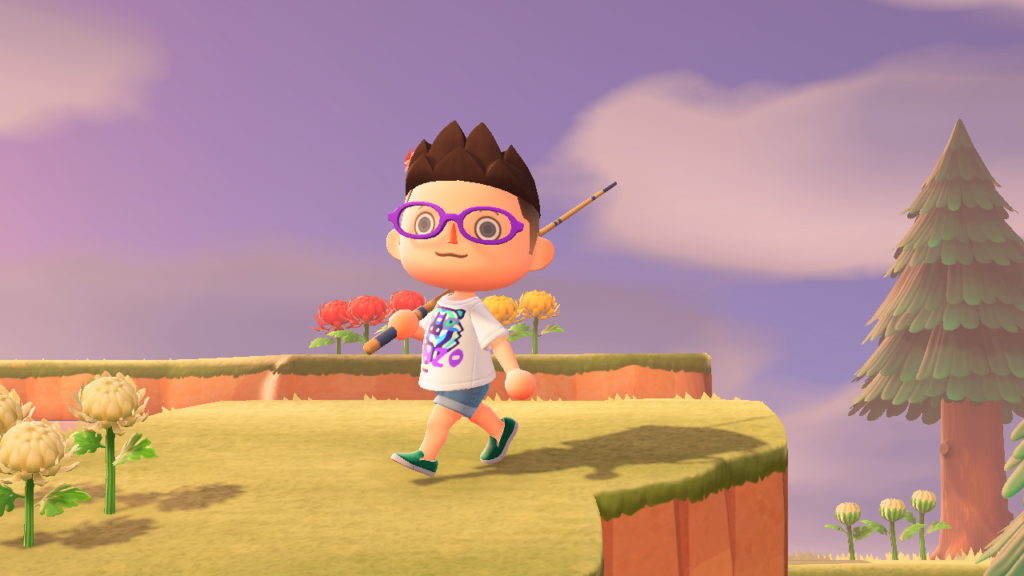
Animal Crossing
Animal Crossing enjoyed a serendipitous release two weeks after the start of lockdown, giving many people who were largely staying at home a new life to poke around in. I quickly fell back into my old routine – giving in half an hour every morning to do my daily fossil hunt, plant some trees, see what’s in the shops, etc – and hooked up with about a dozen friends and friends-of-friends to form a turnip trading cartel.
By June I had paid off my final mortgage and had about 8,000,000 bells in the bank, but after that I’ve definitely pulled away from the game – I’ve had periods of playing for a week or two at a time, but as time investments go I generally feel like I’d rather play something else. I’ve got my island set up just the way I like it, and a wardrobe stuffed full of clothes; I’m ready to visit friends or hosts guests or whatever else in future. I just don’t feel much need to keep playing for my own sake.
If you want a comparative review, I think this is arguably the worst Animal Crossing game?! It’s a huge technical improvement in many regards, and I’m sure I’ll keep playing it, but the slow rollout of seasonal events and content really undercuts everything else, for me. I’m sure this is a line of argument that few will care about, but the game that shipped on the original cartridge was extremely thin by Animal Crossing standards, and in the long run – and by that I mean 10, 20 years from now – that’s the version of the game that will be most commonly available.
I’m glad that they’re releasing the updates for free – although I wouldn’t be shocked if they introduced some kind of paid annual pass in future – but in all likelihood these digital updates will only be available for the next few years. I guarantee that, one day, some burned-out asteroid miner will try to recapture their childhood joy by spending $10,000 on a mint condition Switch and a copy of the game, only to discover that half the things they remember are absent.
Most of these events and characters are well-established in previous games – Nintendo did not need a few extra months to decide that Jingle the reindeer would hand out toys on Christmas Eve. There are definitely reasons why they might follow this kind of slow digital rollout, but personally I do not like it!
My prediction is that they’ll introduce a big expansion at some point where Kapp’n takes you on a ferry ride to another island with a City Folk-type of area, with more shops and activities. Maybe that’s how they’ll justify an annual pass – like you’re buying a ticket to ride on the ferry. Then we’ll hear this rumble of discontent from players who don’t want to buy the expansion, but feel like it’s unfair of Nintendo to release new seasonal content for this region they can’t access.
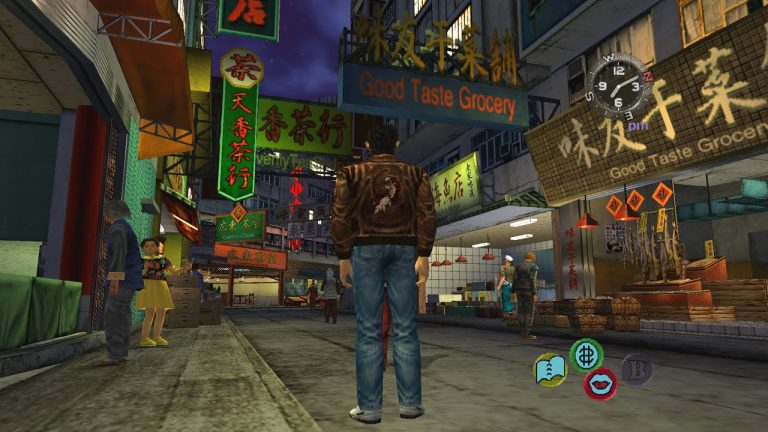
Shenmue 2
I played through the original Shenmue seven years ago, and I’ve had a copy of Shenmue 2 for the XBox sitting in my to-do pile ever since then – I think there’s some argument for it being the best version, like it has full voice acting while the Dreamcast version didn’t (although there are supposed to be a lot of audio glitches if you try to play it on a XBox 360, and I could never be bothered to set the original XBox up to play it). Basically, I procrastinated so long over this situation that Sega have released an HD remake in the meantime, which cut though all my technical problems.
I think I was playing this back in January, before the lockdown really began, but it kicks off a block of ‘cinematic single-player adventure’ games that gave me a vague sense of tourist escapism while I’ve been staying at home. The game is set in Hong Kong and Kowloon during the late 80’s, so it’s a particularly weird virtual holiday destination – Hong Kong is in a different state these days, and the walled city has since been demolished. Kowloon in particular feels like an interesting space to explore, penned in by these crumbling hulks of old apartment buildings where people are doing their best to make do.
Shenmue 2 feels like a kind of retro-futurist vision of what games in 2006 will look like, according to someone in 2001. It seems a bit janky and bad and obsolete by today’s standards, but when you consider it in context it’s really quite stunning – walking round these large 3D environments where you can walk into a shop and pick individual items up off the shelves, or search a room drawer-by-drawer for replacement batteries for your Walkman. It has a Skyrim-like sense of ambition a decade in advance, even if it isn’t so fully realised in execution. It’s contemporaries are games like Grand Theft Auto III, but it managed to create a much more detailed world on older, less powerful hardware.
There are some moments I really didn’t enjoy, like the QTE balance beam scenes that you have to keep repeating until you get them right, and it does seem to get worse and trail off a little towards the end – the final act of the game transports you deep into rural China but doesn’t really have a lot to do once you get there, suffering from the kind of late-stage changes in scope that hobbled the ending of Metal Gear Solid V. But if you’re prepared to excuse a few innovative design choices that deservedly failed to catch on, it represents an interesting moment in gaming history.
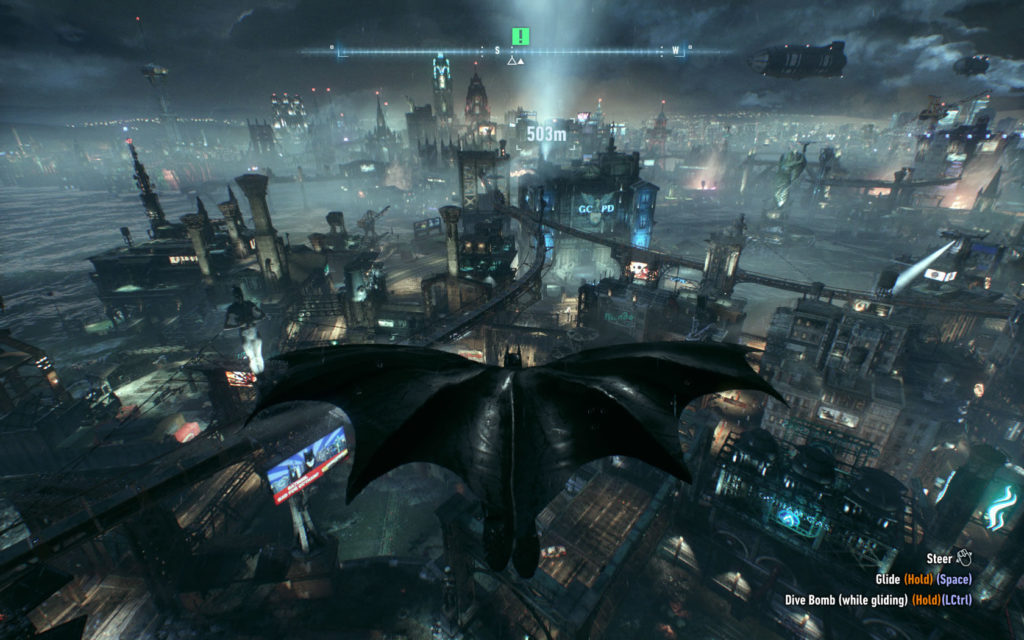
Batman: Arkham Knight
I enjoyed the Arkham trilogy, but as they’ve grown in scale they’ve become looser and more pick-and-choose-y – while Arkham Asylum‘s closed spaces help produce tight storytelling, in Arkham City and particularly Arkham Knight you feel like Batman aimlessly wandering around a supermarket. There’s a great sense of freedom in using your grapple gun and glider to soar over the city, but there’s so much bitty content scattered around the map – especially when you’ve got all the DLC expansions installed – that your main experience is of looking at a checklist and deciding which crimes you feel like dipping in to take care of. If you see something you can’t be bothered to deal with right now? Don’t worry about it, they’ll still be robbing that bank later if you change your mind.
Without wanting to spoil any plot twists, the story feels quite deeply bedded in previous Arkham lore. It assumes that you’re already familiar with a lot of Batman characters, or at least willing to accept them on sight. Particularly when it comes to the minor villains, it’s easy to gloss over and stop caring about who people are and why they’re here – there’s a man with a flamethrower and a jetpack, and you’ll get a big tick on your shopping list if you beat him up. A lot of the time, my biggest motivation for cleaning up the streets of Gotham was my resentment of its grimy atmosphere – as you smash your armoured fist into another goon’s face, you can visualise whoever wrote the threats of sexual violence you keep overhearing on the radio. There are some nifty little shocks and twists at certain moments, but they never stray far from Rocksteady’s previous games – there’s a lot of new content, and it has a nice structure to the storytelling, but its qualitative features feel a bit done-before.
The biggest new feature in Arkham Knight is the Batmobile – equipped in this incarnation with a turret-mounted cannon and an array of nonlethal weapon systems. I was playing the game on PC, and… well, I can’t even say that I found the driving controls frustrating, but they didn’t feel immediately intuitive so I never bothered getting in the car at all. There are some missions where you have no choice – I have particular memories of one late-game boss battle against a tank that dragged on for a few deaths longer than was welcome – but generally speaking? This big USP that sets the game apart from Arkham City can be almost completely ignored. The only time I really enjoyed driving was during the post-boss-fight sequences where you throw the captured crook in the high security trunk of your car and drive them to jail – it was a nice come-down after an intense fight, where Batman gets to talk to his foe for a few minutes and get some closure to their story.
Combat is largely unchanged from the previous Arkham games, in that you win fights by pressing the counterattack button repeatedly and then giving your weakened enemies a poke in the eye. There are layers of tactics that you develop from the different gadgets unlocked throughout the game. To fight well, you need to look at a room of baddies and make a little action plan – sneak up and do a stealth takedown combo on the weakest group, then fire a taser at that guy to take him out of action for a few seconds, then use the grapple on the guy next to him to shatter his guard and hit him with a combo.
But, again… most of that is quite optional. I’ve never had to think very hard about which gadgets match up to which enemy types, because outside of a few forced brawls it’s faster to stay hidden and clear the room out with stealth takedowns. It’s seems strange really, to think that so much time and effort has gone into these systems and content that you can just shrug off, but I appreciate being able to finish a game in a week and then walk away.
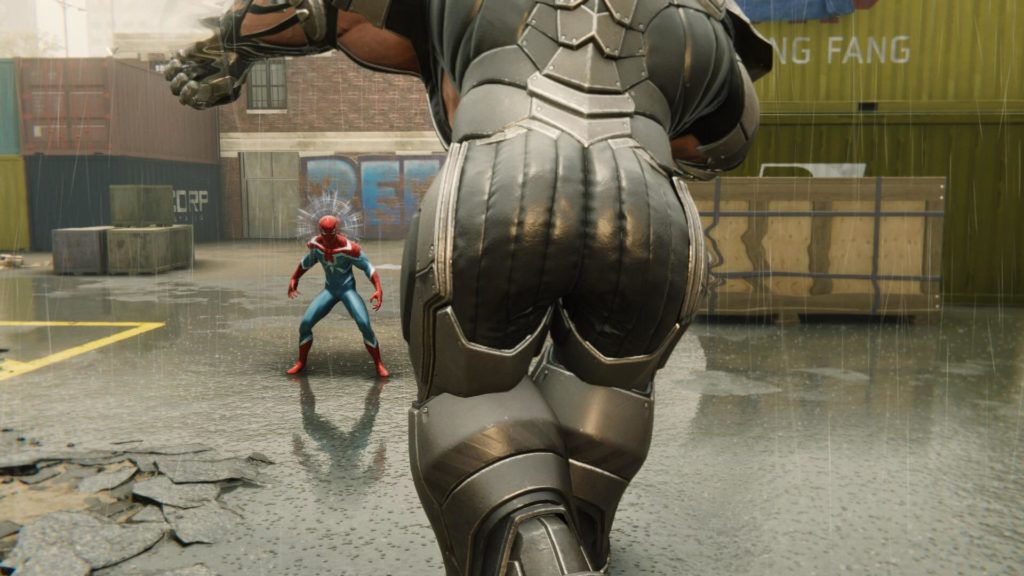
Spider-Man
By the time I finished Arkham Knight I decided I quite enjoyed having a virtual city to fly around while I was stuck indoors, so I looked around online and bought up a bundle of dirt cheap, soon-to-be-last-gen AAA adventure games to see me through the summer.
Spider-Man was perfectly enjoyable, but never really changed how I see the world. It’s in a very similar mould to the Arkham games – you zip around the city and drop in to interrupt a crime when you feel like it…. you mash the counterattack button a few times and then do some gadget combos… there’s a big shopping list of sidequests and jumping puzzles and stuff to tick off… – but it’s far less grim, which I really appreciated. It’s a brighter, more colourful game, and you’re swinging around in a city populated predominately by ordinary people going about their lives; it feels much more relatable, more of a fun space to play around in.
It seems telling that, in Arkham Knight, I basically turned in the bare minimum number of sidequests and criminals to finish the story, whereas in Spider-Man I slogged my way close to 100% completion. There were days where I would put a podcast on and swing around at leisure, hoovering up collectables and beating all the optional activities. It was relaxing. But it never really elevated beyond being a fun way to spend an afternoon – like it’s a very competent example of an open-world action game, but nothing more. I don’t think we’ll be looking back in 10 years time and talking about how it changed the landscape of game design.
Probably the most relevant-to-2020 thing you can say about both these games is how they portray policing. Many more qualified people than me have written about the subject, and there’s little to be gained in me rehashing their arguments – in short, that cops are portrayed as these wholesome, honest, put-upon guys who have simply become overwhelmed by the level of super-crime in their respective cities, and the player has to drop in from the heavens and pacify the bad guys for them, which seems rather tone-deaf at a time when police forces across the US (and the world??) have been accused of a string of institutional failings, corruption, needless brutality, etc.
I feel a certain level of sympathy for the writers of these games – I think they’re trying to capture the spirit of their source material, and aside from a few exceptions like those Green Lantern / Green Arrow runs from the 70’s, mainstream superhero comics are generally quite simplistic. The big-name costumed heroes and villains have nuance, but the minor bad guys are generally committed career criminals, who are often proudly guilty of whatever it is they’ve been doing, and there’s a very simple morality to getting them off the streets. It jars against the reality of police work, which often begins with great ambiguity around whether a crime has been committed at all, and can easily spiral into tragedy and injustice.
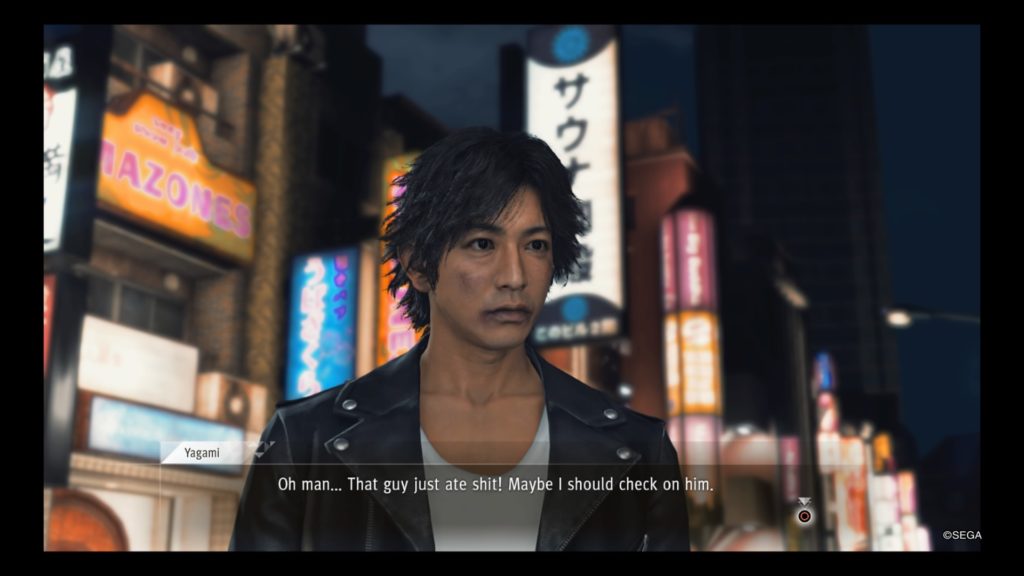
Judgement
Similar but different: Judgement is a sort of cousin of the Yakuza games, in which you play as a lawyer-turned-private-investigator knocking about on the familiar streets of Kamuro-cho.
The writing follows a similar path as the Yakuza games. The main plot is a serious, convoluted story about government corruption and false accusations; the side stories are screwball comedy shorts about helping people with their love life, or finding a new concept for their restaurant. This time you’re playing as a detective rather than a retired gangster, so there’s a lot more emphasis on snooping around and finding the truth of the matter rather than simply beating people up, but as a general rule you can still assume that everyone you meet is secretly the opposite of how they’re presented to you – cats are secretly dogs, innocent victims are secretly master criminals, and the people who confess to crimes are secretly the most innocent people of all. It’s a style of writing that becomes a bit predictable after two or three games, but the thrill of a rollercoaster comes from the journey, not the destination.
Still, the change in context means you’re mixing with a much more varied cast of characters. There’s a lot of attention paid in this game to friendships and community – from the main crew who keep jumping in to defend each other from gangs of hitmen, to the community of neighbours you befriend along the way. If you spend time supporting people’s businesses and helping them with their problems, you can unlock special support abilities that you can trigger when they’re nearby – like tossing you a pair of chopsticks to use a weapon, if you get into a fight near their shop. It’s nice. Kamuro-cho has evolved from a place into a community.
My main motivation for playing this was just to revisit fake Tokyo again – to walk down Nakamichi Street listening to shop jingles and the distant wail of police cars. On those grounds, I’d give it a solid two thumbs up. If you would like a city break holiday without leaving home, you could do far worse.
This was my first Yakuza game (of a sort) on current generation hardware, and it shows in the small details. Most shops and restaurants are now a contiguous part of the main city environment – instead of loading into a separate scene, you simply walk through a doorway and physically move inside. That sounds like a strange detail to get hung up on, but it has some knock-on effects. Fights, of which there are many, can now spill seamlessly between different environments – you might bump into a drunk on a street corner, and after a minute of brawling find yourself slamming their face into a rack of microwave meals. Don Quijote, the real-world shop chain famous for selling all sorts of goods on its densely-packed shelves, has been redesigned to have more open space, presumably to make it more navigable for NPCs.
I did eventually get tired of Judgement. You need to do an awful lot of sidequests and drone racing tournaments to unlock all the bonus things, and after about 50 hours I looked at the remaining to-do list and decided to trigger the final mission and call it a day. I’d be happy to play a sequel, and I hope they shift the emphasis even further from Yakuza’s street brawls and towards this Phoenix Wright-style process of gathering evidence and building a case.
Also – and this is important – it comes with a built-in copy of Virtua Fighter 5: Final Showdown, which is the greatest fighting game ever made.
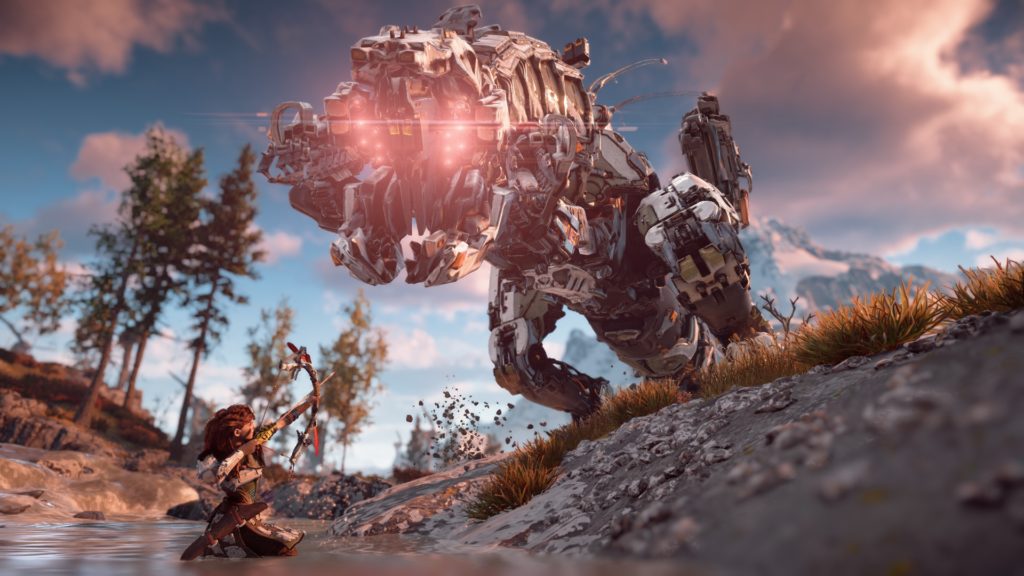
Horizon: Zero Dawn
I didn’t really know much in advance when I started Horizon: Zero Dawn, except that it had a cool reveal trailer at E3 a few years ago, and I once went to an interesting lecture about the cultural design of the different tribes in the game.
It’s a game set in a sort of post-apocalyptic future where mankind has (basically) bombed itself back into the stone age. The remaining humans live in primitive societies alongside giant robots modelled after dinosaurs and other animals. A lot of the action is quite like Monster Hunter – you’re stalking these giant monsters, learning about their behaviour and ecosystem, and harvesting their scrap parts to forge equipment. The main story is about learning what happened to the old world exactly, and I was surprised by how much I enjoyed it unfold.
I think the one big disappointment was the economy design. Different tribes in different regions of the map have their own unique cultures and relationships with the machines, but all of them have the same shopkeepers selling the same kind of equipment, using the same universal currency. You strip enemies down for parts – scrap metal, loose copper wires, fuel cells, etc – which you can trade or craft into ammo and potions, but you’re so flooded with materials that you never run out. It doesn’t matter what your quiver size is, because you can always pause the game and craft more arrows whenever you need them.
Maybe I’m more focused on this stuff than the average person, but it seems like a glaring lack of texture in an otherwise very detailed game. Why isn’t the player trading specialist goods between these different communities? Why give the player practically-limitless ammo? How did they spend so much time developing the art and fashion and culture of these different tribal societies, and then assume they would all value the same goods, and share the same currency? I can imagine they may have once had something more complicated in mind and then yanked it all out after some frustrated playtesting, but the end result makes the game very easy.
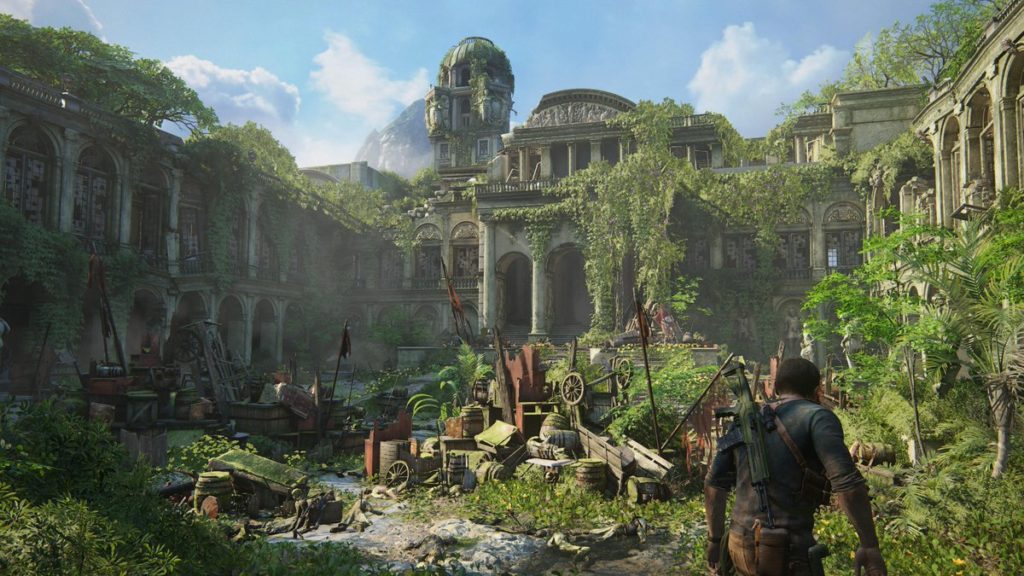
Uncharted 4
Much like the previous Uncharted games, this one came and went so quickly that I barely remember it. It’s another knockabout Indiana Jones style adventure, where your man will solve an ancient sliding block puzzle to unlock a long-lost treasure room… and it will be immediately filled with hundreds of armed mercenaries he needs to shoot his way through.
I think the big new feature in this game is supposed to be the grappling hook – a neat little gadget you can use to swing around and reposition yourself with a quick button tap. I definitely found the combat less onerous than in previous Uncharted games, and I think this is largely because the grapple made it easier to swing around and perform stealth takedowns. Aside from that it’s… more Uncharted. It looks great. The combat animations flow very smoothly. There’s puzzles and fights, some stealth sections, and a few inevitable car chases – anything and everything you would expect from a Hollywood adventure movie.
There’s also a strong thread of nostalgia running through this game, in things like the references to Crash Bandicoot, the cameo appearances of Guybrush Threepwood as part of a historical council of pirates, and the way characters are all chasing their old childhood dreams. It even dips its toe into becoming a ‘dad game’ during the epilogue, where you briefly play as Nathan Drake’s daughter.
It’s a move that feels designed to let Drake evolve in the player’s eyes from a whip-cracking man of action to a caring, responsible adult, and I get the impression that the developers (and their intended audience) still identify with him in this mode – as if the image of Nathan Drake in retirement isn’t exactly how they see themselves, but it’s how they’d like their kids to see them. But hey, if we’re talking dad games, we may as well cut to the main event:
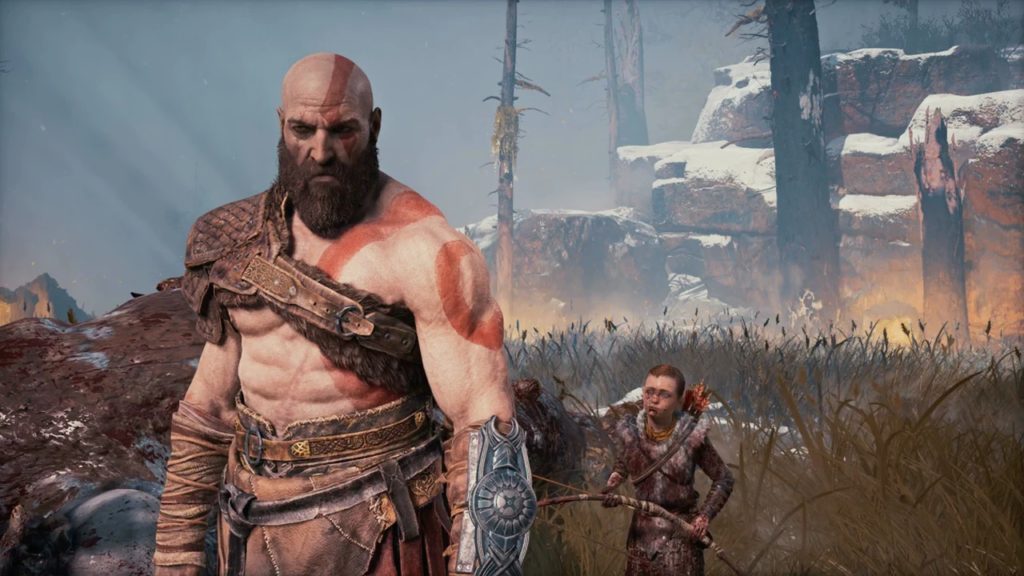
God of War
Kratos is back, and now he’s an underwhelming stepfather!
The latest God of War game is a real standout entry in the ‘dad game’ genre, in which Kratos – an angry bald man who has become one of the big stars in the constellation of PlayStation-exclusive characters – has moved from mythological Greece to mythological Norway, where he lives in relatively peaceful retirement with his wife and her son. His wife – of course – dies, triggering a cross-country romp with his young stepson in which Kratos learns to be a father, and the kid learns how to rip the lungs out of a man.
The game is fine.
Easily the most interesting about it is this element of making big-budget games aimed at middle-aged players who want stories about how hard it can be to connect with their kids – aside from Uncharted 4 and God of War, you can also throw in The Last of Us and maybe even Yakuza 3 as an early case. These are all still very masculine viewpoints, often exploring facile questions like “Does my innocent little girl know how many men I killed on the way here?” but the fact these games are being made at all makes me wonder about what other changes we’ll see in future, as my generation grows old, retires, and are exiled to live in care homes on the moon.
So, what does God of War actually have to say about fatherhood? The main experience here is that your stepson is a clueless whelp, and it’s nice to see him develop some skills and grow in confidence, but then you need to mind that he doesn’t go too far and become flushed with teenage self-importance.
I’d be hard pushed to think of ways in which Kratos himself grows or develops during the game – he’s just a weary, put-upon figure whose plans for a quiet retirement have been shattered by the death of another wife. He’s not a great dad, and I guess his character arc is supposed to be about him learning to be a better at that, but it comes across like he’s waiting for his stepson to become more of a man… and then he does! There’s no growth there, just a grumpy old man deciding he’s been proven right. The main development as far as Kratos goes seems to be that he discovers all about his wife’s secret past and unspoken wishes, and that just makes me wonder whether he’s been an equally inattentive husband.
I have one big criticism of this game and it doesn’t seem to get a lot of traction with people, but here goes: God of War is a series of games in which you run down a corridor and inflict increasingly violent deaths on everyone you meet. Every room you enter is like a soft play area full of punchbags, and mastery of the game lies in understanding how to annihilate each and every one in a single, smooth chain of attacks. You’re matching certain weapons against certain enemies; you’re attacking them in a certain order, or luring a particular guy into a certain position while building up your rage bar. It’s a concept that works well! And the boss fights climax with these spectacular displays of carnage – ripping out a cyclops’ eye, or impaling a hydra’s head on a ship’s mast.
God of War (2018) on the other hand is like a Zelda game with a German gore mod. You’re predominantly exploring a world, and sometimes there are fights. You can spend a number minutes rowing a canoe across a placid lake while listening to your idiot stepson talk about how he should have divine right to tell people what to do… jump off at an island, solve a jumping puzzle, watch a little cutscene… and then there’s a few guys to fight, after which it drops back into this gentle exploration mode. It seems weirdly peaceful compared to the original trilogy, and makes me feel like it would be better off if Kratos had been replaced with a new character for an even fresher reboot of the franchise. Why not, right? I don’t think Kratos himself brings anything to the table that the core God of War brand couldn’t live without.

Hitman 2
A fresh batch of luxurious environments in which to kill people and steal their clothes. The most distressing thing about Hitman 2 is that they seem to really want you to care about the plot, which I could barely follow at all – something to do with one cabal of shadowy assassins secretly hiring another cabal of shadowy assassins in order to track down and take down a third cabal of shadowy assassins? I don’t know and I don’t really care. The important thing is that the new maps are good – rich, complicated dollhouses full of little mechanical tricks for you to discover.
My favourite level was probably the bank. I managed to sneak in, disguised myself as a candidate for a job interview, was hired as an investment banker (which gave me the perfect cover to access the upper floors), and set up an ‘accident kill’ on the target. The twist was that I had to finish the level by carrying a very conspicuous briefcase-sized item out through a crowded hall of customers and armed guards, and those final minutes of scouting out an escape route and planning the necessary distractions so I could walk out without being spotted was like a tiny heist movie in itself.
I miss the slow, seasonal rollout of maps that we had in the previous game. Maybe they already did all that and I’m just late to the party, but it was nice to have those little mini-events where everyone was suddenly dipping back into the game to play the new episode.
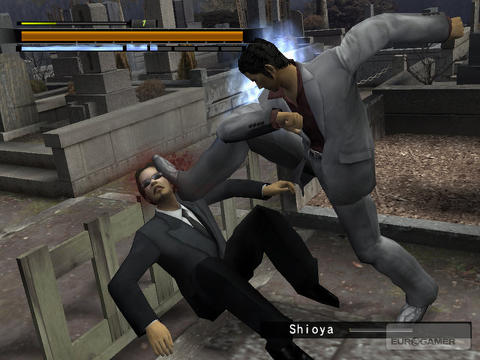
Yakuza 2
I started playing Yakuza 2 a few years ago via an emulator on my old desktop PC, and I had to wait until I finally bought a USB optical drive this year before I could continue the game on my current laptop.
As you might expect it feels a bit limited compared to more recent Yakuza games, but I think the core feature still holds up – the adult love story between Kiryu and a detective from Osaka. Most of the action revolves around a brewing war between the Tokyo and Osaka yakuza families, spurred on by a new hotshot patriarch who is presented as a kind of bigger, more brutal, but equally cunning rival. But while many games model romantic relationships as mechanical systems, Yakuza 2 stands out by the simple virtue of having well-written characters with good chemistry.
There’s also a scene where you fight your way into a solid gold replica of Osaka castle and fight a pair of tigers.
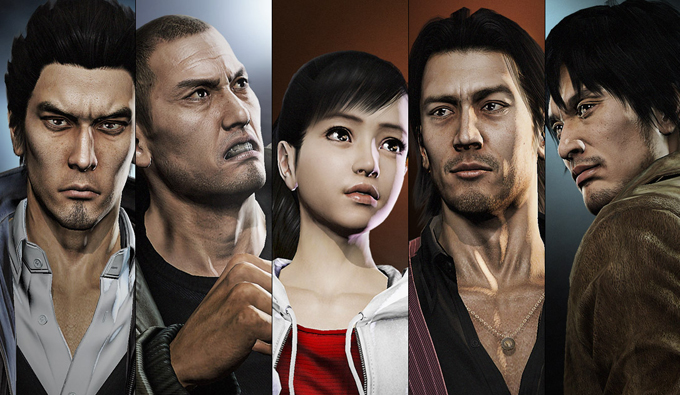
Yakuza 5
One thing you can say about Yakuza 5 is that it certainly is a sequel to Yakuza 4. Both games feature multiple characters, with players getting a few chapters alone with each one to set up their motivations and explain their unique mechanics before bringing them all together and switching freely between them while they wrap up their collected tangle of storylines.
I read that one of the goals of this game was to create a Yakuza game with the kind of sweeping scope of Grand Theft Auto: San Andreas. Mostly it comes across in the sheer geographical size of the game – the heart of the story is still in Tokyo, but each character spends their solo chapter in a different city in Japan (Osaka, Fukuoka, Sapporo and Nagoya). As far as virtual holidays go, this one’s a real tour.
For me – and it seems like I’m in the minority for this one – the highlight was playing as Haruka, who’s been kicking around as Kiryu’s adopted daughter figure throughout the series but usually plays a minor role as a kidnapping victim. She’s probably the most pivotal character in Yakuza 5, as her dream of becoming a pop idol sets most of the game’s events in motion. Her chapter puts a strange swerve on the game, in which the typical street brawls are replaced with dance battles.
Dreams are the main theme of the game really. All of the major characters are tied up in the story because of their dreams, and most of their stories are about what they are willing to sacrifice in order to cling to them. Haruka dreams of being a pop idol, Kiryu is willing to change his identity to help make that happen, Saejima is grimly ploughing through another stint in jail to pay his debt to society, Akiyama’s whole career as a money-lender has been about granting people’s wishes, and new guy Shinada is a disgraced former baseball star who longs to clear his name.
If you’ve never played a Yakuza game before, this is a good illustration of how the series has matured. The earlier games are about gangsters vying for dominance in a series of shirtless fist-fights; the later games are a cross-sectional portrait of the human condition, rendered in the medium of shirtless fist-fights.
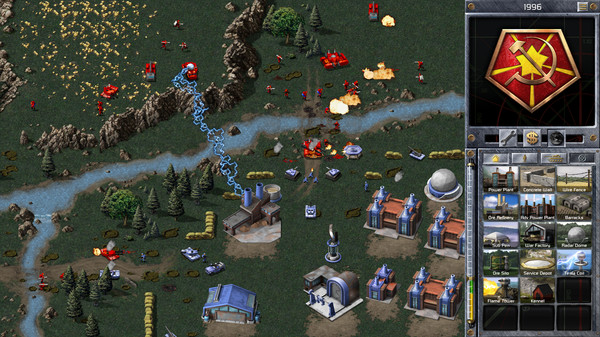
Command & Conquer Remastered Collection
I wrote a review of this at the time and I’m not going to repeat it all here. The short version is that it’s a faithful recreation of a classic game and, while it may seem unfair and awkward by modern standards, the fact they didn’t try to update the gameplay to reflect modern sensibilities was a very good decision.
I’m really hoping they crack on with a sequel so I can play Red Alert 2 in HD.
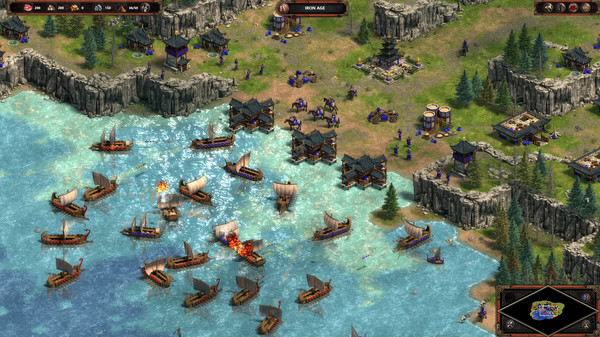
Age of Empires: Definitive Edition
Right off the back of Command & Conquer, I went on to play the HD remake of Age of Empires. It’s not a game I really played much as a child – I put a lot of hours into Age of Empires 2, but most of my memories of the original come from playing demo campaigns that came free with magazines.
I think the thing I find striking compared to contemporaries like C&C and Warcraft is how short the campaigns are – many of them seem to be six or seven levels long. There’s much more emphasis on the storytelling side of things – most campaigns are covering a century or two of history, and each level cherrypicks a particular battle or folktale to tell the foundational myth of an empire.
There are big technological jumps between levels, although at the same time there’s usually only one or two new tools added to your kit. And this first Age of Empires game really makes a bad pitch in terms of formation control – there’s a lot of rock-paper-scissors relationships between different unit types, but controlling precisely which units are going to stand where and do what is very fiddly.

Two Point Hospital
I played through most of this last October, but I came back to finish it off at the start of this year. It’s a close spiritual successor to Theme Hospital (a game my friends and I played a lot of as teenagers) and has many of the same key people behind it. The basic concept is that you build and manage a hospital, laying out rooms and furniture and things so that patients can enjoy a smooth path through the process of diagnosis and treatment. It features a lot of wacky illnesses and a certain kind of low-key cynical British humour around the business of running a hospital. Your staff have a lot of randomly-determined skills and attributes, but they can include negative traits like laziness or a short temper; you can jimmy your prices up and down to affect demand for certain treatments, or take advantage of people.
It follows in the tradition of many old Bullfrog (and Lionhead) games in that you’re managing this virtual antfarm full of little computer people, but they don’t always do what you expect them to. There’s a certain degree of chaos in everyone’s personality, and if you fail to manage the hospital well – if everyone is cold because you didn’t place any radiators, or patients are queuing for days at a diagnostic bottleneck – their stress and anger can boil over and erupt into nervous breakdowns or defecating in corridors. At its heart this is a game about logistics and efficiency, a relative of games like The Settlers or Factorio, but it has this spongey layer of emotional management that makes it feel warmer, more human.
Putting emotions to one side, I did feel like I had ‘solved’ the economic puzzle of the game a little over halfway through the campaign. There are some classic Theme Hospital principles to keep in mind (eg. think of your hospital as a conveyer belt, building a flow that pushes patients through diagnosis as quickly as possible before sending them out to dedicated treatment buildings on the edges of the map) and a few Two Point-specific tips that take advantage of its particular systems (which I won’t spoil here, but I’m prepared to share with anyone who asks). Once you find a system that works, you can basically repeat the same pattern on every level and cruise through to the end quite comfortably.
The one level that really stood out for me was Duckworth-upon-Bilge, which has the unique twist of being a public sector hospital. Instead of getting paid directly for treatments, you have to meet certain targets in order to earn performance bonuses from the local health authority. Ultimately this just gives you a different puzzle to solve – instead of taking advantage of patients, you’re learning to game the bonus system and get paid for making as little effort as possible – but it felt refreshing.
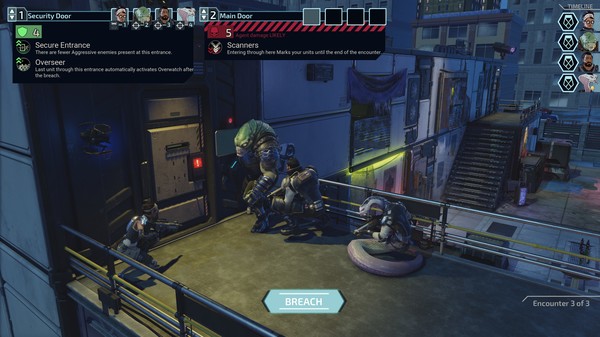
X-Com: Chimera Squad
Longtime X-Com fans seemed very disappointed with this, although speaking as someone who found the first game kinda tiresome and never bothered with the sequel, I thought it was alright – a palatably bitesize chunk of tactical maths. You control a sort of futuristic SWAT team dealing with terrorist threats in a world where space aliens live among us on Earth (and if you really want to understand the setting, it takes place some time after the alien occupation of Earth in X-Com 2, so there’s a lot of simmering resentment towards our former overlords).
The big difference between this and the main X-Com games is that the sprawling tactical maps and unseen enemy ambushes have been replaced with short, simple breach and clear missions. You have a small team of authored characters with particular skills and personalities, and they have a very simple job to do in a very constrained environment. Every level starts with an initial breach (kicking in doors, jumping through windows, blowing a hole in a wall) and most can be completed in just a few minutes, which suits me fine.
As with most tactics RPGs, I get this feeling that the game is balanced with the expectation that you will find an exploit a few ridiculously powerful skill combos. Some of the boss missions seem punishingly difficult at first, but can be beaten in the blink of an eye if you have the right combination of guys with the right equipment mods, popping off certain abilities in a particular order on turn 1. There are severe lurches in difficulty sometimes, and – as with most X-Com games! – it’s prudent to keep a few old save points in your files, in case you realise you’ve dug yourself into a hole and need to rollback a few days. But I like that the game is generally more forgiving this time around – when something goes wrong in a mission, it isn’t necessarily mean you need to restart. Your guys never die in combat; at worst they’ll come home with serious injuries and emotional traumas, but these can be healed if you take them off active duty and assign them to go to rehab during the next few missions.
There are questions to be asked about how cool it is to play a game about militarised cops kicking in doors and gunning people down in the same year that Breonna Taylor was killed. I think Chimera Squad benefits from a bit of psychological distancing in that the game is full of aliens and weird cults and things, but not enough to stop feeling uncomfortable.
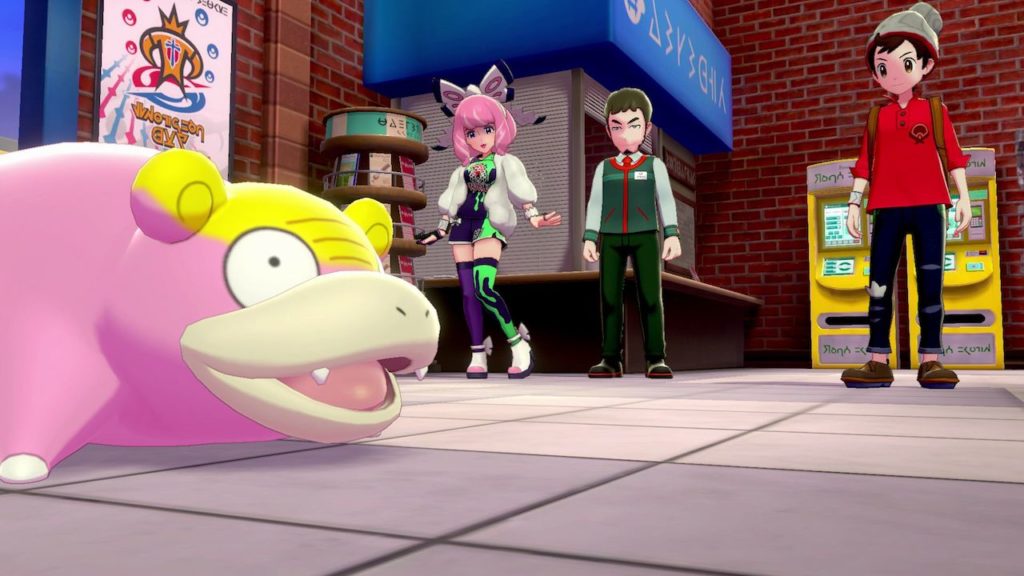
Pokémon: Isle of Armor (DLC)
The first of these first two expansion packs (and I’m expecting there will be more to come next year) felt short and unchallenging. My main issue is that I’ve already got a lot of Pokémon on hand that are far more powerful than anything I’d encounter, so I’m only challenged to the extent that I can bother to handicap myself.
I suppose what I would like in a future expansion would be something like the Battle Frontier from generation III – a resort area that expands on the Battle Tower gameplay, offering new battle modes and weekly challenges and things – picture a regular event like Splatoon‘s Splatfests, or monthly battle themes. If they really wanted to embrace the modern world, they could integrate PvP battles into the main story?! I think it’s important that Pokémon remains fully playable as an offline game, but it’d be cool if you had the option of progressing through the story by playing a ranked matchmaking mode. Perhaps competitive battling doesn’t fit the kind of stories they want to tell, but I think it’s something they should be gently encouraging in terms of managing the game.
I spent a lot of time exploring every nook and cranny of the Isle of Armor to find all the little hidden things. I don’t think it was really worth the effort, but the real value of these expansions (for true Pokémon masters) is that they add a few hundred more Pokémon back into the game – a few hundred more boxes to tick! I’m glad they expanded on the Wild Area concept (which basically covers the whole island, instead of being limited to one zone) because it really sets the Switch games apart from the previous generations. Also, isn’t it a bit weird that the game is set in the Pokémon world’s version of the UK, but the Isle of Armor is named using American spelling?
It’s worth noting that Pokémon Home (the latest in a series of online Pokémon storage systems) came out a few months ago, and I spent a VERY busy week going through 18 years worth of old games and transferring hundreds of old Pokémon through this complex web of systems to bring them up to date. Now that it’s done, all my old favourites are ready to come out of retirement, and I have a mountain of spare legendary Pokémon to use in trades. Truly I am a God among 10-year-olds.
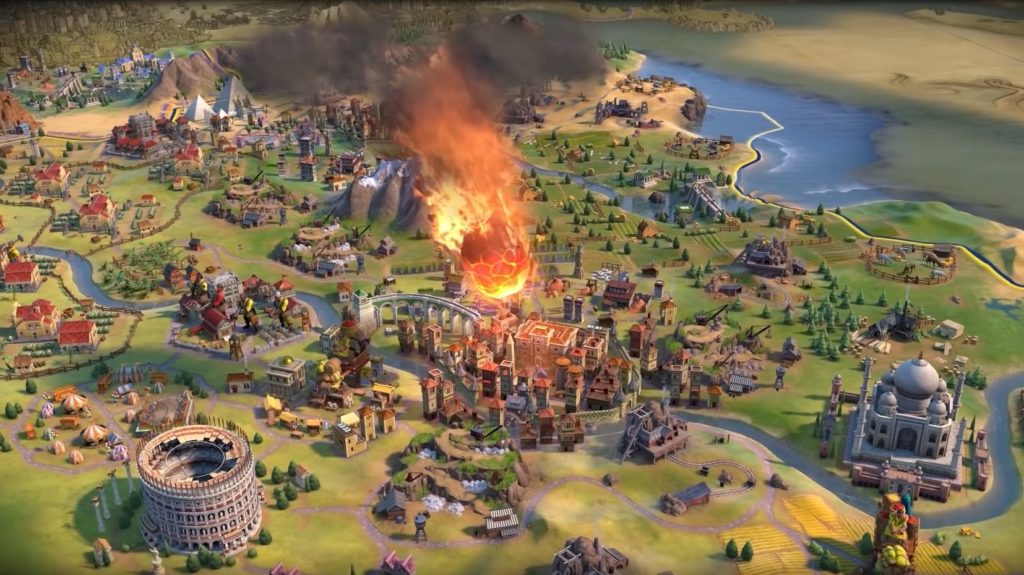
Civ VI (with all the DLC)
I’ve spent a good amount of time playing Civ VI over the years, but earlier this year I picked up the Rise and Fall and Gathering Storm expansions, as well as the New Frontier season pass. This added a huge wodge of new systems and content into the game, but experiencing it all at the same time means I’m not entirely sure which expansion any individual item comes from.
I played a full game of the new Apocalypse mode (something from the season pass, where natural disasters – added in Gathering Storm – happen very frequently) as the Dutch, reasoning that their bonuses to building dams and dealing with floods would help me survive. There was a lot to take in, particularly when it came to the new era system from Rise and Fall – basically, if you hit certain objectives during an era then you qualify for a big productivity bonus in the next era; if you fail all your objectives you enter a dark age, but while you lose a lot of regular productivity you can gain some powerful new abilities, as your people grasp for some revolutionary new idea to reform society. The system incentivises you to take a gamble on accepting a dark age from time to time, which is a good feature for a long game like this – it means even successful players have a reason to voluntarily create some tension in their game.
I had a few hairy moments where the game kept vaporising my (large and vitally important) capital city with a random asteroid drop, but after savescumming my way back out of trouble I eventually lost to an Egyptian science victory anyway. Good times.
I think, if there’s one thing I would like from a Civilization game, it would be a mode that cuts the game to a single evening. I used to play a lot of Civ Revolution – there was a time in my life when I could play a complete game on my phone in precisely the time it took me to catch a train into Manchester – but it felt a bit repetitive and shallow once you’d streamlined your strategy. I think what I’d like is something that has a similar kind of depth as Civ VI, but just has a much shorter goal in mind – like something where you start in the middle of a large war, and have 30 turns to capture one particular city.
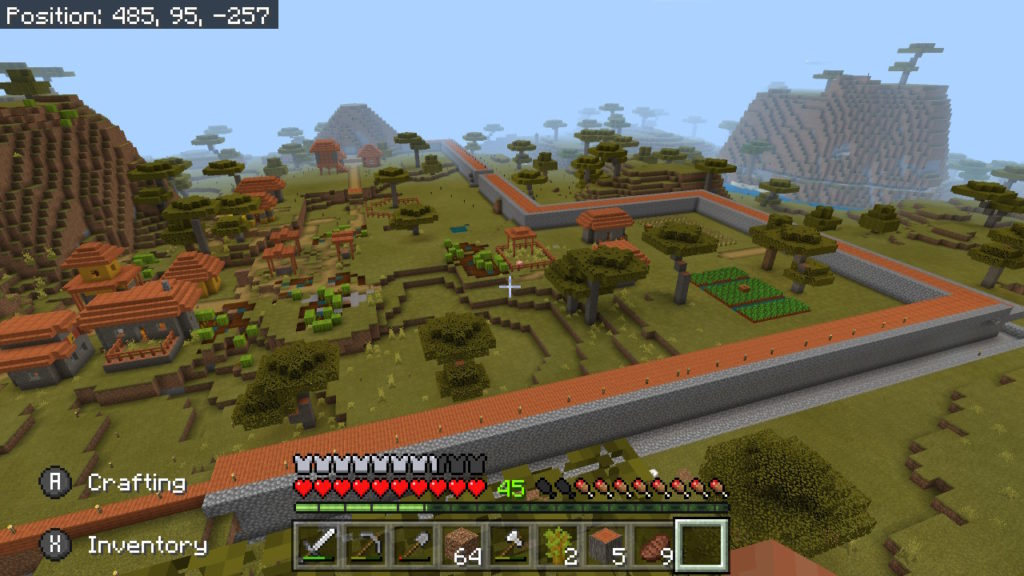
Minecraft (the Nether Update)
I don’t have a lot to say about Minecraft that hasn’t been said before, but my two main projects this year have been to set up a secure outpost in the Nether, and repopulate a dead village.
I put a lot of time into Minecraft while teaching my nephew how to play last year, and I began 2020 with a huge fortress built into the side of a hill (perhaps inspired by all the time I’ve spent watching Grand Designs) and a nearby village with a 10 foot thick wall around it – the site of multiple successful raid defences, and a key component of my economic fortune. Delving into the Nether was always part of my plan – I want to finish the game eventually, and in the meantime I’d like to set up a portal network to fast travel around the overworld – but when I heard about The Nether Update this summer I decided the time had come. I had already build a big, ominous tower on top of my fortress-hill, and it was the perfect location to set up my interdimensional portal.
All of which is to set the scene for the following underwhelming story: I went into the Nether, calculated the optimum location for my main portal home, built a few walls and staircases and things to help keep it secure but accessible, grabbed a few basic materials, and then left and never really went back. I enjoy the tension of being in the Nether – the lack of basic resources, the lethal terrain, the constant risk of being blown up by a Cacodemon – but over the few days I spent there I just kept thinking about things I could be doing back at my hill, or how much more fun it would be to charge into the Nether with a group of friends.
This led me into my second big project of the year, in which I binge-watched the whole of Gilmore Girls while repopulating a dead village to the north of my hill. The first stage of the project was to dig an underground rail line to the successful town to the south, and the second was to build another massive wall (see screenshot), drop lights everywhere and generally monster-proof the place.
Once I was satisfied with the state of the walls – which still aren’t finished, but they seem good enough to keep most things out – I had to walk around the marketplace in the southern village and lure a few traders into my underground metro facility, before shoving them into minecarts. It took about an hour to iron out the bugs in my powered rail system and transport my unwitting settlers to their new home in the north, and then had to find a way to lure them back out of the tunnels so they might detect the new village and take up residence.
Reader, it was a success. I’m pleased to report that the northern village now has a growing population of farmers and leatherworkers, who will continue to breed while I finish off all the towers and crenellations (and the lava moat) around their home.
If I have one big ask for a future update, I’d love it if villagers had more of an active role in the world. I’ve enjoyed being able to trade with my neighbours and level them up and things, but individuals have very little agency, and villages as a whole feel very static. I’d like it if villagers could have more personality, and if they could make little changes around their village – putting up decorations for special occasions, building new houses or fields, creating statues or gravestones to memorialise dead friends or major events, etc. It would be nice to feel like you’re walking around inside a thinking, evolving community, instead of seeing them as vending machines that convert one trade good into another.
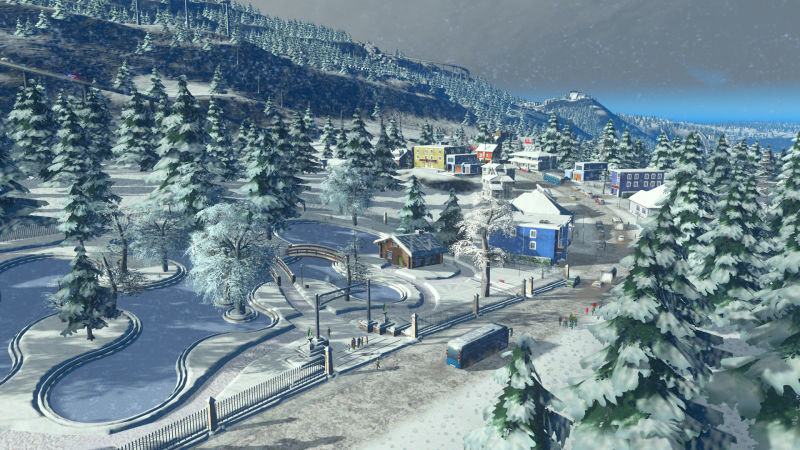
Cities Skylines (with lots of DLC)
A generous friend recently gifted me some spare codes for the Snowfall, After Dark, Mass Transit, Industries and Green Cities DLC packs. The Snowfall and After Dark packs in particular added some new environmental features I wanted to try out – obviously enough, ‘snow’ and ‘day-night cycles’ – so I started a new city during the Christmas break and spent a few days checking it out.
I still think the game is quite overwhelmingly complicated, even without all the extra DLC features. It starts off at a good pace, limiting you to basic tools like power, water, roads and basic building types, but whenever you reach a milestone in your city’s development and unlock new features, the whole city updates its systems and suddenly demands two or three new services you haven’t even heard of yet. The worst moment for me is when you unlock graveyards and crematoriums, and suddenly the ‘corpse disposal’ system kicks into action, but you haven’t built any facilities yet so dead bodies immediately start piling up in living rooms across the city.
You can dig your way out of these situations easily enough – actually, my biggest criticism of the game is that it’s too forgiving when it comes to failure, since you can cruise on indefinitely while in a modest amount of debt – but once you find your feet and things settle down again, it can be difficult to make the most of all the tools at your disposal. I think I have at least twelve different types of road unlocked at this point, and I’ve still only used the first, most basic kind, because nothing in the game has really explained when and why I should upgrade to anything else.
Well, that’s part of why I keep circling around the game and thinking about going back. There’s a lot of diagnostic tools and info panels to help you understand the flow of traffic and goods around your city, and I really like the idea of optimising these tangled webs – the Mass Transit DLC in particular adds a lot of new public transport options – but currently I’m stuck in this Dwarf Fortress mode of play where I’m running the game on one screen with a guide to commuter network planning open on another screen, just to figure out where to put my bus stops.
The Snowfall weather effects did help put me in a Christmassy mood, although I think it treats snow as a kind of permanent environment type for your map, rather than a temporary weather effect that can come and go. I was hoping for something more like Animal Crossing – a sense that your city changes a little with the seasons, like how After Dark makes little changes to the economy system based on the in-game time of day (as industrial areas close down for the night, and bars and nightclubs open up).
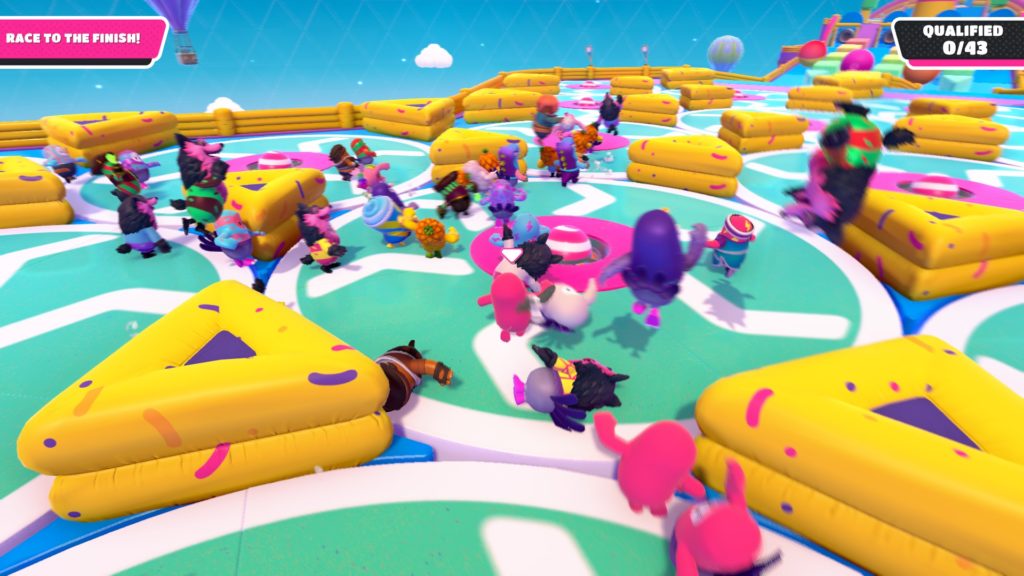
Fall Guys: Ultimate Knockout
I would describe Fall Guys as a sort of physics-based multiplayer platform game, styled after TV obstacle course gameshows like It’s A Knockout and Total Wipeout. There’s a bunch of little ragdoll guys in funny costumes, they run through a maze of soft play barriers and moving walkways, and sometimes a giant wrecking ball manages to swat them into oblivion. The game is played in a series of elimination rounds, in which sixty contests are gradually whittled down to one winner.
I’ve dipped in for a few goes with this since it launched, but I don’t find it particularly satisfying. I think it’s a good game to watch – which is a rare and important feature, in the age of streaming – but for me sitting at home, without a single Subscribe button to smash, I’m not sure why I would choose to play this over any other game on my shelf.
I suppose it reminds me of that period when the success of Braid and Portal meant that everyone started jamming physics into their games. I’m sure there’s a lot of interesting technical netplay stuff going on under the hood, and there’s a lot of interesting ideas for designers to steal learn from when it comes to making a game for a streaming audience, but when I sit down and play it at face value, it leaves me cold.
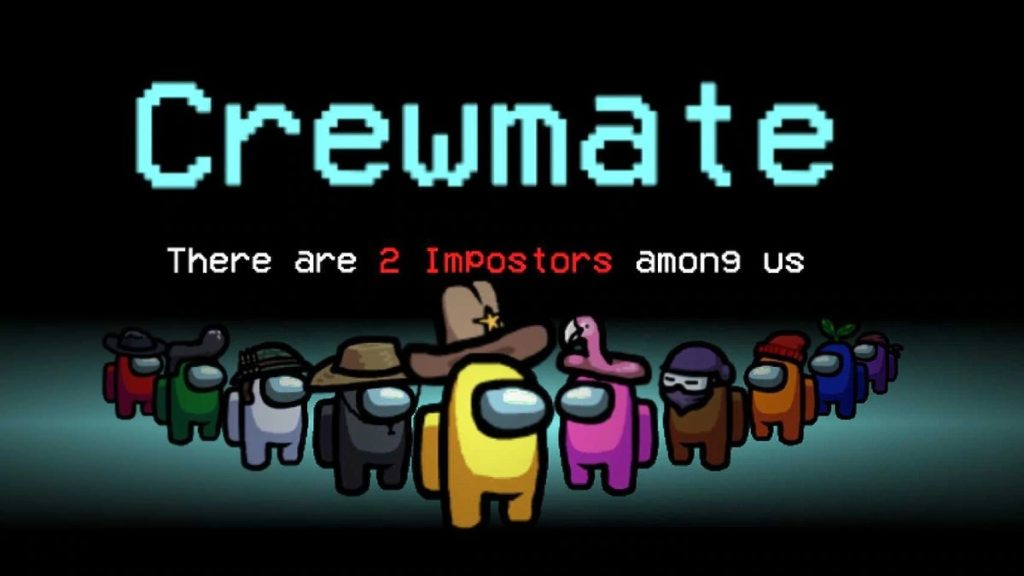
Among Us
I can understand the appeal of Among Us – I went through periods of playing a lot of Werewolves with friends when I was a student, and it’s a similar concept of secret assassinations and mob executions. The basic idea is that you have a large group of players, but a few of them are randomly selected to be killers. The killers must work in secret to kill all the other players, but the other players can periodically get together and vote to kill one of the group – the hope being that they can identify and purge the killers, but with the risk that they might kill an innocent neighbour. The meat of the game comes from the arguments and tortured logic as people build cases against each other and defend themselves.
Among Us updates the formula with some good videogamey features, giving you little jobs to do while the assassins are afoot and (always the thing that strikes me when I’m playing) going out of its way to obscure your vision with giant pop-up windows whenever you start to do a task – which neatly creates the impression that your character is so focused on their work that they wouldn’t notice their friend being murdered in front of them.
Personally, I think I enjoy the game most when I’m playing with friends – in an ideal world we would be sitting in a room together so we can shout accusations at each other. I think one of the biggest probably the game faces comes from the anonymous, throwaway nature of the matchmaking system. There’s a large numbers of players who jump in and out of games until they’re assigned the particular role they want – at the risk of sounding very old, I think it’s disrespectful to the other players.
Also I’d like some kind of ‘kill’ hotkey so I can assassinate people on the hoof, but maybe the awkwardness of the controls is part of the game’s charm?
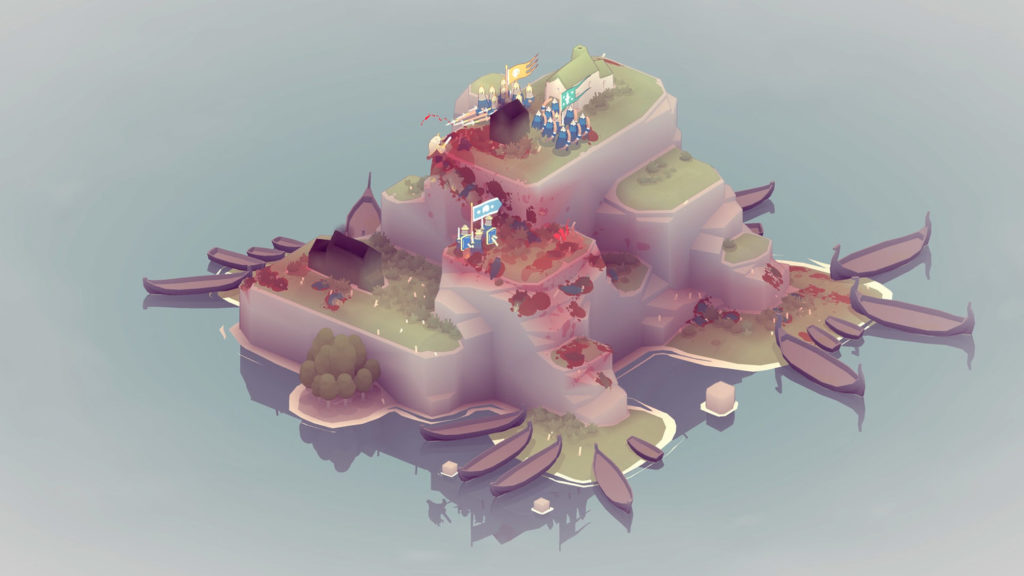
Bad North
Bad North is a minimalist strategy game in which you control around three or four units and defend a small island from waves in invaders. The combat system is simple to grasp but has a nice amount of depth to it – there’s a bit of rock-paper-scissoring around what kind of weapons you use, how heavily armoured you are, and so on, and there’s a surprising amount of tactical positioning in play when it comes to things like ranged attacks, and knocking enemies back into the sea for a quick kill. Battles are linked by a metagame map in the vein of FTL, in which your band of warriors flee from island to island while being pursued by the barbarian horde.
I never managed to pull off a successful run through the campaign, but I played it a good number of times and had some pretty successful runs – if I remember rightly, my best was cut short when I panicked under pressure and decided to try throwing a bomb for the first time, which did not come with instructions and ended poorly for me.
I like the game though. It sticks the minimalism angle very well – you’ve got just enough tools to make the game interesting, without any duplicate roles. Each level is just a few minutes long and, if you’ve been paying attention so far, you’ll understand that this is something I appreciate.
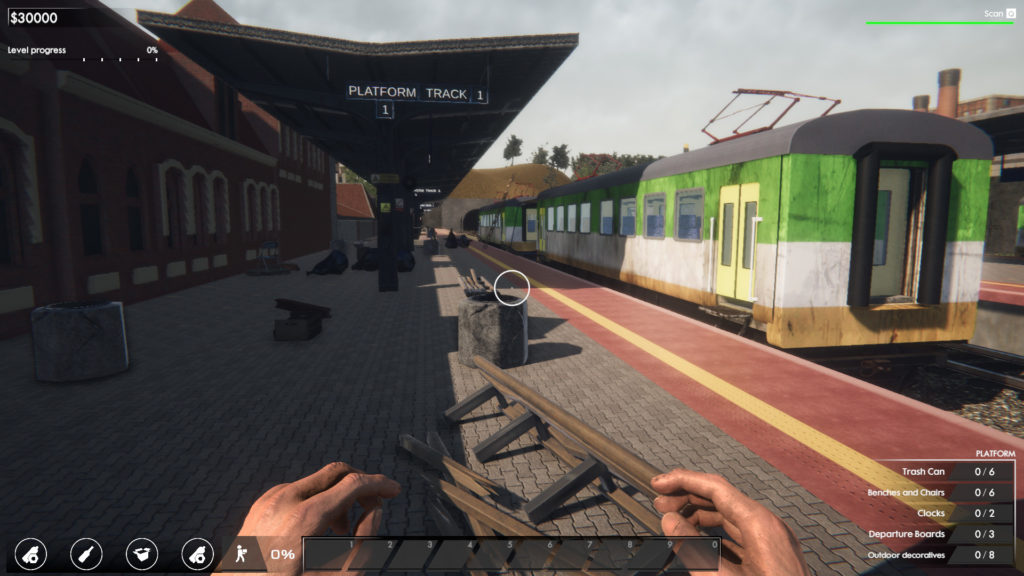
Train Station Renovation
I’ve not had a great deal of time with this, but I did spend one nice afternoon listening to podcasts while fixing up the first level.
I think this is a sequel to House Flipper, and the idea is that you take on contracts to renovate dilapidated train stations. You need to round up rubbish and drop it in a skip, scrub graffiti off of walls, remove overgrown ivy trails and spiderwebs, replace broken benches and toilets, paint walls, lay new carpets, and equip the station with ticket machines, bins, timetable boards, and so on. It sits in the same kind of genre as games like Hardspace: Shipbreaker – games where you walk around in immersive environments and quietly do housework.
I’ve spent a lot of time at small train stations over the course of my life, and it feels very wholesome and peaceful to work your way round one in small steps and fix all its problems. At first you’re just cleaning up a lot of obvious unpleasantness, but as the game segues into picking new carpets and laying new furniture, it starts to feel like those intensely personal home decoration moments in The Sims or Animal Crossing – this isn’t just a train station any more, it’s your train station.
Sadly – and I’m loathe to bring this kind of thing up – I did suffer some very off-putting framerate issues once I’d added a few new objects into the scene. After refitting the main ticket office with a new set of benches, I found that any time I looked towards that building – even if I couldn’t see it – the game would start to chug quite badly. I’m hoping this doesn’t keep coming up every time I play.
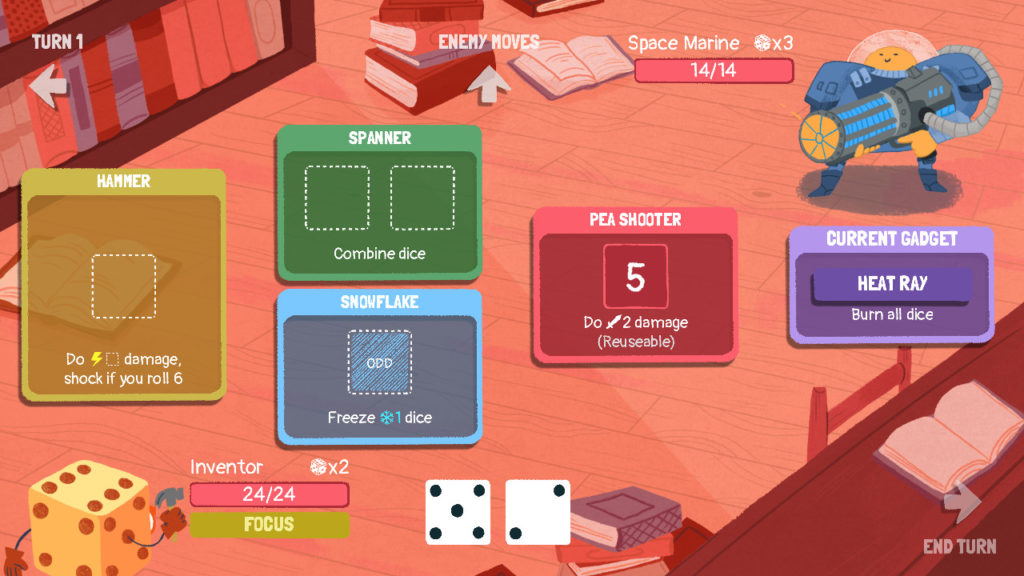
Dicey Dungeons
The latest thing I’m currently playing is Dicey Dungeons, a sort of roguelike RPG type thing by Terry Cavanagh. The play experience is a bit like Into The Breach, except modelled after regular Final Fantasy battles instead of Final Fantasy Tactics. You roll a handful of dice at the start of the round, and assign whatever numbers you rolled to trigger different abilities; the meat of the game lies in taking this pile of random numbers and optimising your turn within the overlapping layers of activation rules and dice manipulation abilities.
Maybe you roll a 5? Well, you can use the Spatula ability to flip the dice over and turn it into a 2; then it’s small enough to trigger your Magic Dagger attack, which gives you a new random roll. Maybe that new dice is a 4? You can use your Bump ability twice to add two to the result, and put that 6 into your Hammer attack to deal some damage and – because it was a 6 – trigger the bonus Shock status. If you’re the kind of person who likes to solve small math problems for fun – and who isn’t? – the good news is that’s pretty much all this game is. It’s like fighting in the colosseum in Final Fantasy VI, except you’re playing as Edgar and your tools are activated by solving sudoku puzzles.
The game pulls off a surprising amount of breadth, too – the six different character classes provide very meaningfully different experiences, and each character has six different courses through the game that change how their abilities and opponents work. I’m a big fan of the Robot, who generates random numbers instead of rolling dice. It’s a little hard to explain, but it turns the game into something like Blackjack – you’re trying to generate as many numbers as possible without going bust and crashing the little guy.
It’s been out on PC for a while, but the Switch version just came out recently and it’s exactly the kind of game I want on there. Two thumbs up.
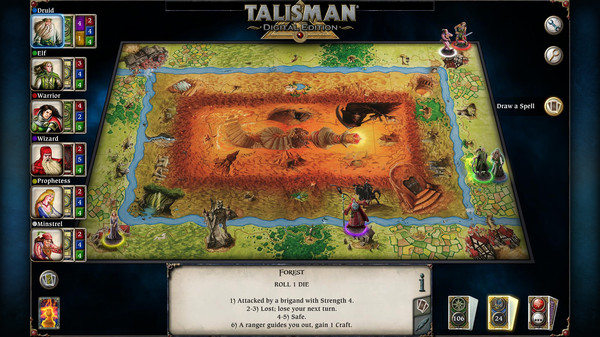
Talisman
I picked this up in a summer sale with the intention of playing some virtual board games with a friend, but we never got round to organising ourselves. Still, I played a few practice games against the computer to see how it goes. My friends and I used to play a bit of third edition Talisman when we were young, and I remember thinking that aimless walking around and building up power was a lot more fun than finishing the game, but I couldn’t remember the details.
The basic idea is that you pick a character – and there are dozens available, each with one or two unique special rules – and then romp around a fantasy world while you improve your stats, collect magic items, and build a party of followers. The map runs in a loop around the outside edge of the board and you can choose whether to move clockwise or anticlockwise as you explore forests, towns, mountain passes, and so on. Once you feel confident in your abilities, you can cross the mystical barrier to the inner loop – a Mordor-like realm of evil featuring blasted wastelands, volcanoes, and more powerful enemies, where you will be given a quest to test your mettle. If you succeed, you may venture into the central loop – a gauntlet of heroic challenges as you approach the dark tower at the very centre of the board, where your final destiny awaits.
(Side note: I watched There She Goes earlier in the year and noticed the extremely minor detail that there’s one episode where the family play a physical version of Talisman together round a table, and another where the mum is playing a digital version alone on a tablet. It seems like they’re trying to portray a realistic gaming habit with a level of detail that most TV shows wouldn’t bother with.)
In short, my teenage self was right – I played a few games through to completion as different characters, and the standard ending is that one player fights their way into the centre of the board and then sits there with nothing to do except roll one die each turn, damaging all other players on a 4+. The idea seems to be that it works like a randomised countdown timer – you can expect the other players to lose 1 health every other turn, so they have a limited amount of time to rush through the remaining challenges and kill the leading player – but when some characters have easy access to healing, it can drag on to the point where you’d rather quit the game than win. It’s worth noting that a lot of the frustration comes from the game’s UX – little actions that you would skip straight over in the physical game can become a whole string of mandatory pop-ups that you must click through every turn.
HOWEVER: There is a ton of expansion packs and DLC for this game, and they include lots of different rules for ending the game – including having the first person who reaches the tower immediately win the game, which sounds great to me. Most of the expansions also include adding more explorable areas to the game – usually by adding another little L-shaped map onto the corners of the main board, so players can venture into towns and caves to explore them in detail.
Is Talisman good? I enjoy it as a sort of lightweight RPG – the way this rogues gallery of wizards, pirates, monks and so on are all walking around and having their own little adventures in a shared world – but the competitive element never really satisfies me. I think I’d like some kind of system where victory is determined by random secret agendas. Imagine if Lord of the Rings ended with Gandalf contentedly puffing on his pipe from a safe distance while he watches a mushroom cloud of magical energy swallow up Mount Doom and his two trusting marks.

Blood Bowl 2
Back in the days when people went outside and spoke to each other, I played pretty regularly in my local Blood Bowl league. The pandemic has meant that meeting up with people and sitting across a table from each other for long periods can potentially kill you, so the league has been on hiatus. I bought Blood Bowl 2 for peanuts in a PSN sale, as a way to keep practicing during the off-season.
In case you’re not familiar with the game, it’s a sort of fantasy version of American Football set in the Warhammer world – a violent sport in which teams of orcs and elves and dwarfs and such try to convey a ball into the opponent’s endzone and score a touchdown. Your players gain experience points and new skills as they play more matches, but they can also pick up injuries or be killed on the pitch – team management is a big part of the game, like making decisions about who to bench and when to sign new players. I’ve been playing the game in one form or another since I was about 10 years old and I still love it, but I do have some issues with Cyanide’s digital editions.
Easily the biggest problem I have is that the game is so focused on its (very good-looking!) animated 3D world that you have to sit through lots of little animations and dynamic camera cuts while taking your turn. I really don’t care about any of that stuff! I can certainly see the importance of having it in there for new players, but all I really want is to move my pieces around and process dice rolls as efficiently as possible – I think my ideal would be something more like FUMBBL, but with an isometric view over the pitch.
I also think it’s a shame that the singleplayer campaign only lets you play as a human team. I can see that the emphasis of the game is on the online matchmaking mode, but if you’re going to have a singleplayer story mode, why limit it to the most boring, middle-of-the-road race? They could even have the player move between teams as part of the story – the player is supposed to be a coach after all, not just some disembodied spirit of the team. It’s a missed opportunity to give tutorials on some of the unique mechanics of other races, like how undead teams can raise killed opponents back from the dead as skeletons after the match, or how goblins have a very bribe-heavy game based on fouls and illegal weapons.
A new edition of the tabletop game came out just a few months ago, featuring some of the biggest mechanical changes in decades (they split one particular stat into two separate stats, and the fact that’s considered a major change gives you an idea of how stable the game has been). Blood Bowl 3 is due out sometime in 2021 to reflect this new edition, and if it was just a quick and lightweight way to play Blood Bowl on my Switch – if there was even just an option to turn off all the cinematic camera and play it as a snappy board game – I’d preorder it. But I’m pretty sure it won’t be!
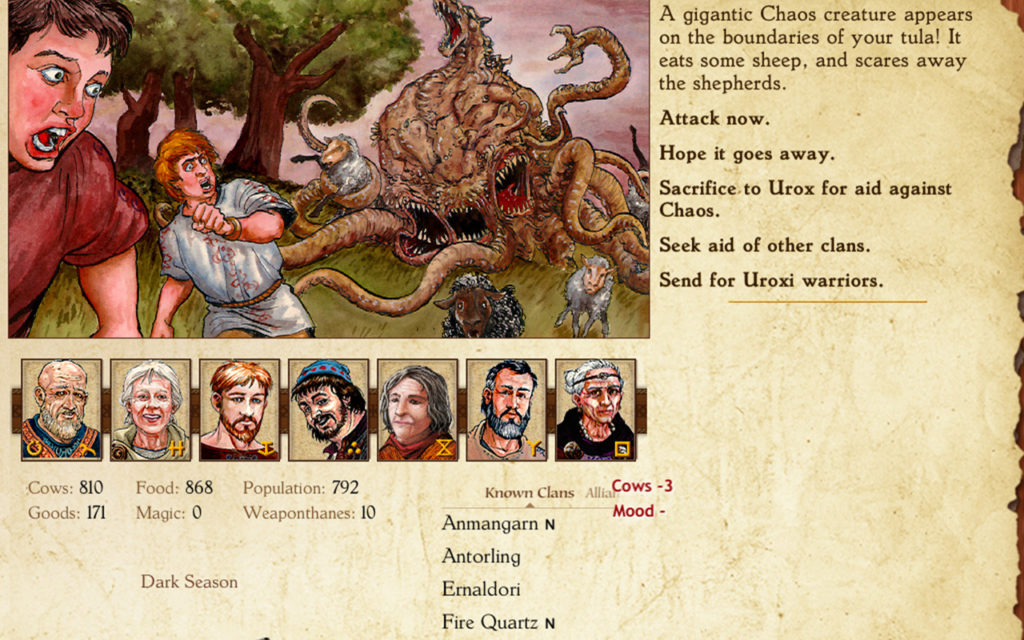
King of Dragon Pass
One thing I’ve been doing this year is screensharing some games while playing with a friend who doesn’t play videogames – like streaming to an audience of one, but in a collaborative way where I’m just offering advice and they make the big decisions. It started with me reading some old Fighting Fantasy game books, but after looking around for some kind of digital game to try, I found King of Dragon Pass to be very good.
It’s quite a unusual game – a sort of choose-your-own-adventure management sim, in which you manage a tribe of fantasy iron age settlers as they try to set up a new home in the titular Dragon Pass. Part of the game involves managing your economy of farmland, tribespeople, diplomatic relations and magic via a series of buttons and sliders, but the real fun lies in the little narrative scenes where people make requests of the tribal council, or mystical vagabonds threaten to curse your fields if you don’t offer them tribute. This was the big hook for us, at least – it’s like playing a Fighting Fantasy book with a scientific calculator.
We eventually suffered a prolonged famine which pretty much wiped out our tribe – I think the solution was to symbolically slay the god of droughts in a mystic ritual, which we eventually did, but it had taken so long to line things up that we were still caught in a death spiral afterwards.
It was good fun though, and I’m eager to play more games like this. The problem is, there are very few out there – there’s a spiritual successor by the same developers called Six Ages, and the good news is it should fix some of the technical problems in King of Dragon Pass (eg. systems that just don’t work as intended), but I’m surprised there aren’t more indie developers cracking into this genre.
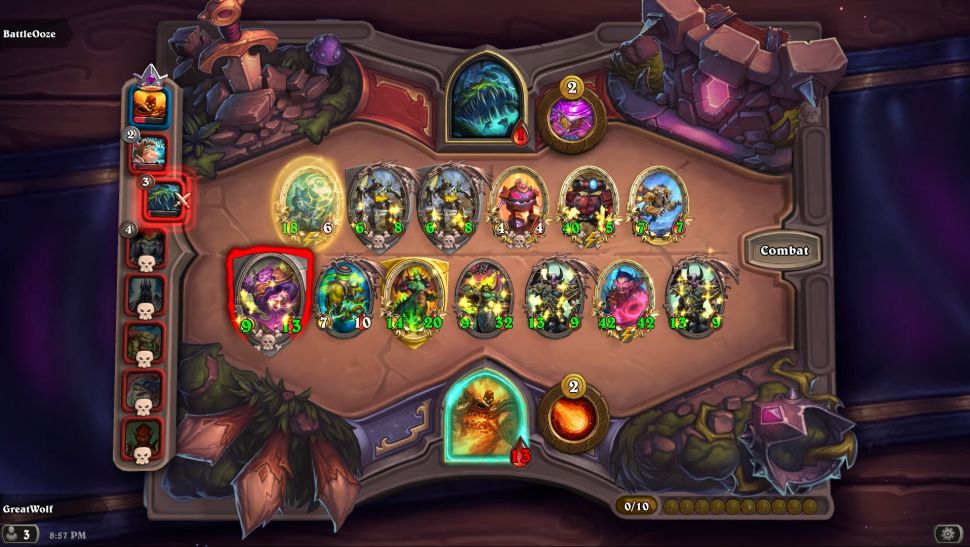
Hearthstone
I’m rounding out my list with the numbers go up block – ongoing live games that I’ve been playing a little bit each week for years now.
Hearthstone’s ranked mode has had quite a stable year, from my perspective – the Galakrond’s Awakening update in January led to a complete redesign of my deck, but Ashes of Outland, The Scholomance Academy and Madness at the Darkmoon Faire have each led to only one or two cards being swapped out.
My main deck at the minute is… well look, I’m not a very serious competitor and I don’t pay much attention to the community lingo, but I think it would be described as a Highlander Rogue deck, with Galakrond. The easiest way to explain any of that is to say that ‘highlander’ decks contain only one copy of each card (see: “There can be only one“) so your deck is much less consistent than most players (who are allowed two copies of most cards). The advantage is that your deck is slightly less predictable to your opponent, and you can make use of a few particular cards with very powerful abilities that can only be triggered when your deck has no duplicates. My favourite one is a genie who uses some kind of machine learning to offer you the perfect card for your current situation – it’s an extremely flexible tool for finishing your opponent off or countering a powerful combo, and Rogues have a lot of tools at their disposal for replaying him two or three times during a match.
Most of my deck was based on a list I found online, but the one big personal twist I put on it was to include Shadow of Death and Stowaway – an excellent little 9-mana combo that leaves you with a 4/4 minion, two or three fresh copies of a minion of your choice (including from your opponent’s side of the board), and two extra cards in your hand. The big challenge of using a card like Shadow of Death in a highlander deck is that you’re shuffling three duplicate copies of a card into your deck, which means your most powerful cards (like the genie) won’t trigger; Stowaway neatly solves the problem by drawing at least two copies straight back out again, and the remaining copy will automatically summon another free minion sometime in the future.
It is supremely satisfying to watch your opponent pull off a big combo and summon a big meaty minion like Colossus of the Moon or something with a powerful ability like Blood of G’huun, only for you to instant-kill it before it can attack and then summon two copies of it right back in their face. People sometimes quit! You need to do a little setup work to really make it stick – like baiting out your opponent’s best counters in advance, and preparing a quick kill of your own – but I love the feeling of letting my opponent do all that legwork and then judo-flipping their mana investment against them. I think I’ve played at least 150 games using this deck, and I’m going to be sad when it rotates out.
Also, cheers to all those Resurrection Priest players in the last six months who have built a one-trick deck around Convincing Infiltrator – a strategy that involves summoning lots of copies of this one guy who instantly revenge-kills one of your guys whenever he dies. It was annoying the first few times, but now it’s genuinely fun to find new ways to bully these guys, like putting one hand on their forehead to hold them back while they swing empty punches at your chest. My favourite thing is to let them sit on the board for a few turns while my opponent buffs them up with things like Apotheosis and Grave Rune, and then I pull out some cross-class surprise like Hex and harmlessly pop them out of existence. PEOPLE SOMETIMES QUIT!
Outside of ranked play, this has been a big year for new multiplayer modes. Battlegrounds was introduced at the end of last year as a kind of autochess mode – you draft a stable of minions and then watch helplessly as they fight your opponents. It’s an interesting spin on Hearthstone, and I gather it’s been hugely popular, but after playing it a lot over the summer I became a bit tired of it – once you wrap your head around the current meta and figure out some good builds, every game starts to feel very predictable. They cycle cards in and out of rotation every few months, which gives you a new meta to adapt to – there will never be a repeat of the time I had two Holy Mackerels with Taunt and Poison, restoring each others Divine Shield as my opponents minions rushed suicidally into them – but ultimately I feel like it doesn’t have enough depth to keep me coming back.
The other big new game mode has been Duels mode, which is like a cross between the Arena and the singleplayer Dungeon Run. You pick a character (with some unique class options, compared to standard Hearthstone) and build a small deck, and then play a series of games until you have either won 12 games or lost 3 – whichever comes first. Between each game you can draft a booster pack of cards to add to your deck, usually themed around a certain card type of strategy (eg. three Taunt minions, or two weapons and a minion that buffs weapons).
Much like the Dungeon Run style adventures they’ve been adding in recent years, it’s a nice way of compressing the whole Hearthstone experience into a small, repeatable package. I think it’s a good way to learn and practice the mechanics of the game – everything is a bit more varied and unpredictable, you need to think on your feet and pay attention to what’s on the board – and (unlike standard ranked play) it doesn’t require any serious time or money investment. However, for all the same reasons, I feel like it cannibalises a lot of my interest in the main game – when you can dip in and build a whole new deck type and have an interesting afternoon and then wipe the slate clean and walk away, there’s not much incentive to hold your ranked deck to the grindstone for months at a time, fighting the same build match-ups over and over while you unlock more cards and hope for the next big Legendary that will change your life.

Destiny 2
Destiny 2: Beyond Light is basically just Destiny 3 and it’s incredible to see so many people fail to grasp this.
I suppose you could call it a ‘soft sequel’ – instead of just making the number go up (which is the whole ethos of Destiny, after all??) Bungie have pitched it as an expansion of the game that just happens to remove half of its old content. I think the wise way to see it – somewhere in the middle rungs of the galaxy brain meme – is that Destiny 2 no longer exists, and Destiny 3 is backways-compatible with most of Destiny 2’s content.
Compare this with the transition from the original Destiny to Destiny 2. Switching to the new edition of the game meant losing all of your progress and all the old content. And yes, sure, you can still go back and play Destiny, but how often would you want to?
This new way of doing business means that you cannot go back and play old Destiny 2 content – the game you bought four years ago no longer exists, at least not in its original state. It feels like a kick in the teeth if you think of Destiny as a sci-fi FPS that just happens to have good multiplayer systems, but I think it seems much more obvious and natural if you see it an a live MMO first and foremost. So my perspective is not that some content has been removed, but that only some old content is included in the new edition of the game.
It’s not ideal, and it does bother me from a ‘game archivist’ kind of perspective, but the flipside of all this is to imagine how you’d feel if Destiny 2 came out and didn’t require you to start a fresh character, didn’t take away all the guns and armour you’d collected, and was compatible with all the content from The Taken King and Rise of Iron. That sounds pretty nice right? And if the price you had to pay was that you couldn’t go back to the original Destiny client, would that really be an issue?
In any case, I think the important thing to remember about Destiny is that life is short and all human activity is ephemeral.
So, how has it been? I actually jumped through all the hoops and earned the Moments of Triumph t-shirt (again) this year, although it was all just casual filler play while I had time to kill in lockdown. Most of my attention went on wrapping up some exotic weapon quests before Beyond Light came out and rendered them incompletable.
My happiest memory is probably getting my Hard Light catalyst – for the uninitiated, that means I got a random item drop that made one of my guns slightly more accurate. It’s one of the easiest catalysts to get, but I think their loot drop probabilities change depending on how many unfinished catalyst quests you already have open; because I already had around eight on the go, it was never going to drop for me. So the story of how I got it was that I went through my storage boxes and pulled out every exotic weapon with an unfinished catalyst quest attached, and grinded through them all one by one. I think I got five or six done before the one I wanted dropped at the end of a Strike. And look, it’s not the best weapon by a long way, but it’s been my main gun for at least three years now and I’m happy to finally tick this one little box on it.
I even picked up the Hard Light sparrow and ghost shell from the in-game store, recently. It’s like that episode of Friends where Joey pretends to own a Porsche.
As for Beyond Light… I don’t know. It’s fine. It’s more Destiny. It’s probably one of the better expansions, in terms of the PvE content, although it sounds like the new class abilities – which are all focused on freezing your opponents – are really imbalanced for PvP. I think I’ve done pretty much everything except for the new raid, and the needlessly extreme stuff like solo flawless Grandmaster modes.
There’s a great deal more effort to tell a coherent story here than in previous Destiny games. It’s notable that the Exo Stranger – one of the main characters from the original Destiny‘s story, but who went almost completely unexplained (who is she? why is she doing any of this??) has been brought back and suddenly given a rich, detailed backstory that weaves her into the rest of the world.
Well, I suppose it’s possible that this was all explained in a digital telegram that you could unlock by entering a one-time code included in a novelisation of The Taken King or something, but I’m one of these simpletons who just plays the games.
The new environments are nice, full of snowy arctic valleys and underground research bases that look inspired by Overwatch. There’s a neat blizzard effect that comes and goes and adds a lot of atmosphere – you’ll hear the electronic groan of a giant combat droid cut through the howling wind, but you won’t see where it is until you’ve practically walked into it.
There are still very few new enemies – those giant combat droids are the only ones that come to mind – and since many of the old planets have been removed, the range of enemies you come into contact with has been cut down dramatically. I’ve chosen Beyond Light as my moment to switch from PS4 to PC, so I’m in this odd position of not being a fresh new player, but not having access to Forsaken or Shadowkeep content either. At least… I can access the old quests and missions and things while I’m playing on console, but not the new stuff; I can access the new stuff on my PC, but not the old stuff. But it means my Beyond Light experience seems very limited, compared to what I’m used to.
I’ve enjoyed playing through it, but I can also see the scaffolding for another year of pointless grind stretching out ahead of me. I don’t mind having something to pass the time with while we wait for the vaccine rollout, but it seems clear to me that the metagame of Destiny is such a massaged, centrally-controlled experience that the rewards are never worth sinking serious time into. You should play it insofar as you enjoy the act of playing, and then stop.
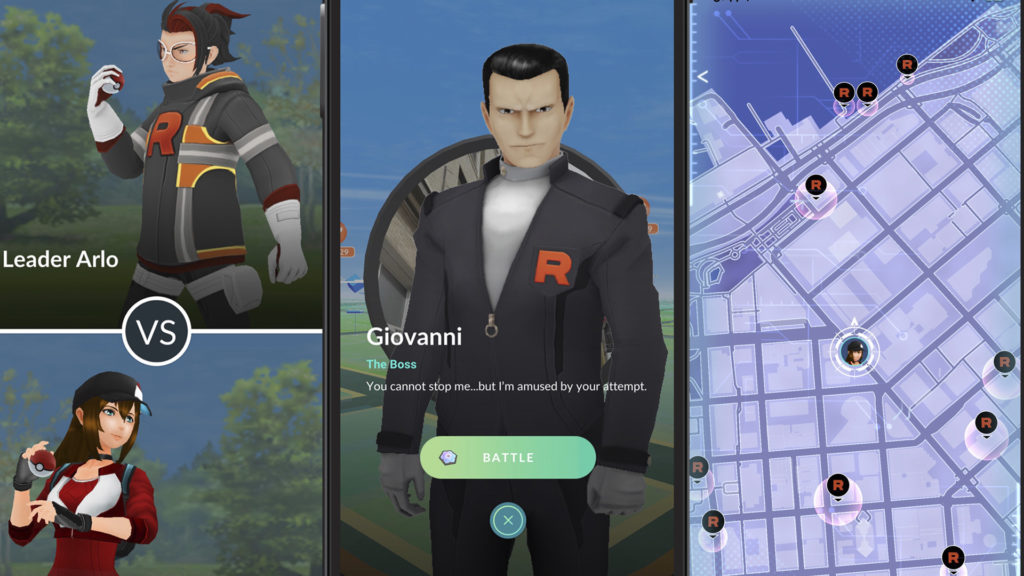
Pokémon GO
I think the main reason I got back into Pokémon GO this year was when they integrated it into Pokémon Home – I have a few shiny Pokémon I wanted to transfer over, and I could get add Meltan and Melmetal to my master collection.
Aside from that, what have they added recently? Team Rocket have been taking over Pokéstops since last summer, so I played through a quest about fighting them off and captured a Mewtwo for my efforts. Mega-Evolved Pokémon have started showing up as Raid bosses, but that stuff is far beyond my level of engagement. Oh, and I’ve started getting little missions to take AR scans of different Pokéstop locations, which seems like an interesting way to crowdsource AR data from players.
They’ve added another 10 player levels to the progression system, although I think they’re unlocked by completing particular quests instead of (or in addition to) hitting certain XP requirements. They’ve also lowered the level requirement for submitting your own Pokéstop suggestions from 40 to 38 – and considering I’m currently level 36, I’m quite interested in this change.
I still feel like the game is very shallow, but I don’t mind going for a short walk down the street to get my streak bonus each day. Speaking as someone who often seems to live in remote places, I’d like to get access to the Pokéstop submission tool and start doing a bit of AR level design around my town.





